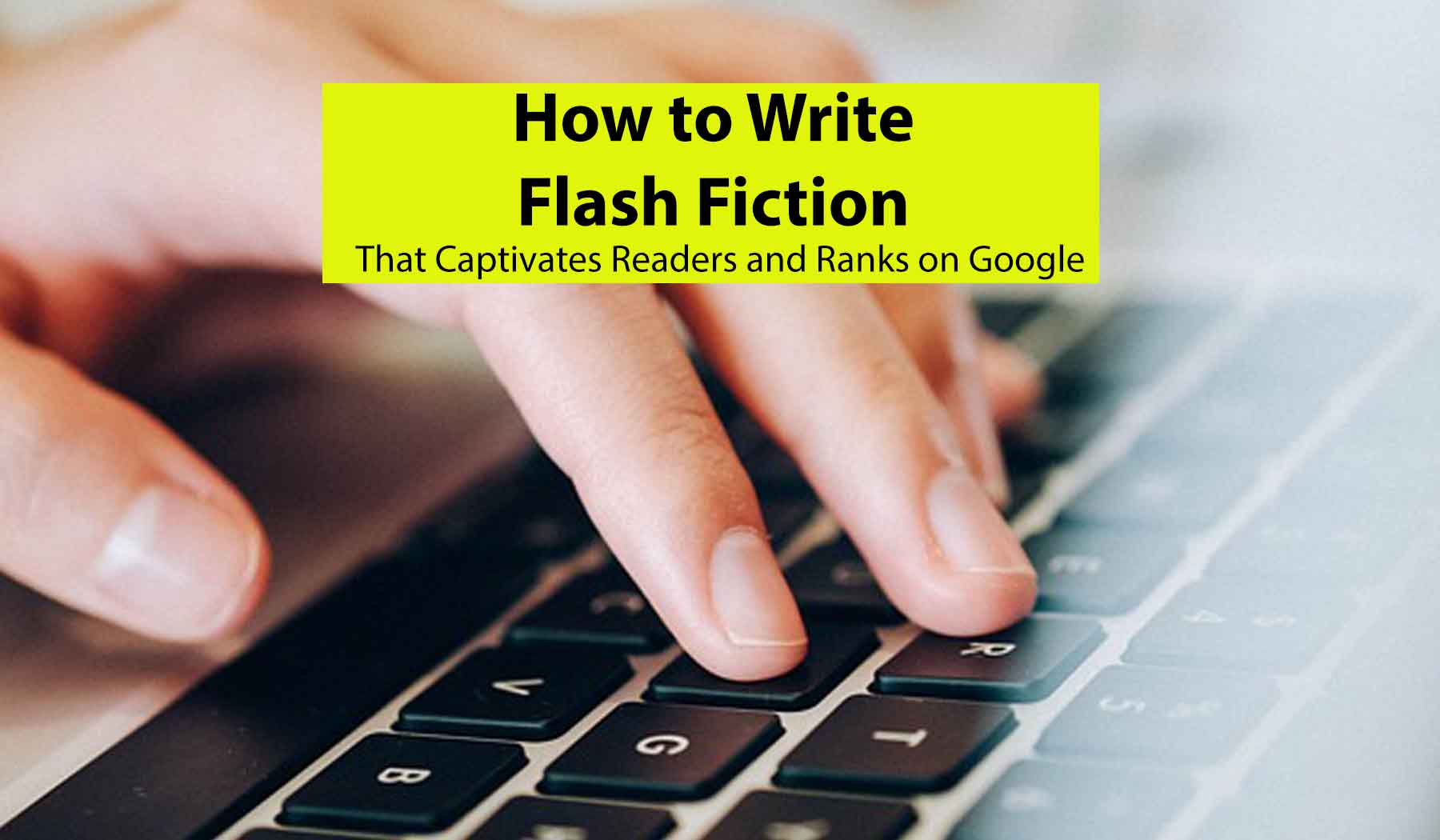Flash fiction is a unique and captivating form of storytelling that challenges writers to create compelling narratives within a limited word count.
While it may seem daunting at first, mastering the art of writing flash fiction can be an incredibly rewarding endeavor.
In this comprehensive guide, we will explore the key elements and techniques that will help you craft engaging and impactful flash fiction stories that captivate readers.
So, let’s dive in and discover the secrets to writing remarkable flash fiction!
1. Understanding Flash Fiction
Before we delve into the process of writing flash fiction, it’s essential to understand what exactly it entails.
Flash fiction, also known as micro fiction or sudden fiction, is a concise form of storytelling characterized by its brevity.
Typically ranging from 100 to 1,000 words, flash fiction aims to convey a complete narrative with a compelling plot, well-developed characters, and a satisfying resolution within a limited space.
2. Choosing a Theme or Concept
A strong theme or concept serves as the foundation for your flash fiction piece.
Consider these tips when selecting a theme:
- Focus: Choose a narrow topic or concept that can be explored effectively within the limited word count.
- Emotion: Opt for themes that evoke strong emotions, allowing you to create a powerful impact on readers.
- Uniqueness: Explore unconventional or thought-provoking themes to make your flash fiction stand out from the rest.
3. Crafting a Compelling Plot
In flash fiction, every word counts, so it’s crucial to develop a concise yet engaging plot.
Here’s how to do it:
- Hook: Begin your story with a captivating opening line or paragraph that grabs the reader’s attention instantly.
- Conflict: Introduce a conflict or problem early on to drive the narrative and create tension.
- Resolution: Aim for a satisfying resolution that brings closure to the story, even if it’s an open-ended one.
4. Developing Memorable Characters
Though you have limited space, well-developed characters are essential to create an immersive reading experience.
Follow these guidelines:
- Simplicity: Keep the number of characters to a minimum to avoid overcrowding your flash fiction piece.
- Distinctive Traits: Focus on a few key traits or quirks to make your characters memorable and relatable.
- Dialogue: Utilize dialogue effectively to reveal character traits and advance the plot within a limited word count.
5. Setting the Scene
Establishing a vivid and evocative setting can greatly enhance your flash fiction piece.
Consider the following tips:
- Specific Details: Utilize precise and descriptive language to convey the setting concisely.
- Imagery: Engage the reader’s senses by incorporating sensory details that bring the setting to life.
- Symbolism: Use symbolic elements within the setting to enhance the overall depth and meaning of your story.
6. Using Concise Language
In flash fiction, every word must serve a purpose.
Follow these techniques to make your writing more concise:
- Eliminate Redundancy: Remove unnecessary words and phrases to streamline your narrative.
- Choose Strong Verbs: Opt for powerful verbs that convey the intended action and add impact to your sentences.
- Show, Don’t Tell: Instead of explicitly stating emotions or actions, use descriptive language to show them indirectly.
7. Experimenting with Structure and Form
Flash fiction allows for experimentation with different structures and forms.
Here are a few techniques to consider:
- Time Shifts: Explore non-linear narratives by utilizing flashbacks or shifting timelines.
- Multiple Perspectives: Present the story from different character viewpoints to provide a unique and multi-dimensional perspective.
-
- Fragmented Narratives: Break your story into fragments or vignettes that, when read together, create a cohesive whole.
- Unconventional Formats: Consider using lists, letters, or other unconventional formats to tell your story in a fresh and engaging way.
8. Editing and Refining Your Work
After completing the initial draft of your flash fiction piece, the editing process is crucial for refining your story.
Follow these steps:
- Word Count Evaluation: Review your piece to ensure it fits within the desired word count range for flash fiction.
- Readability and Flow: Check the pacing, transitions, and coherence of your story to ensure a smooth reading experience.
- Eliminate Excess: Remove any unnecessary words, sentences, or subplots that distract from the core of your story.
- Get Feedback: Share your work with trusted beta readers or writing communities to gain valuable insights and perspectives.
- Polish and Proofread: Pay attention to grammar, punctuation, and spelling to present a polished final piece.
9. Submitting and Sharing Your Flash Fiction
Once you are satisfied with your flash fiction piece, consider these avenues for submission and sharing:
- Literary Magazines: Research and submit your work to reputable literary magazines that publish flash fiction.
- Online Platforms and Contests: Participate in online platforms and contests dedicated to flash fiction.
- Personal Blog or Website: Create a space on your own blog or website to showcase your flash fiction pieces.
- Social Media: Utilize platforms like Twitter, Instagram, or Facebook to share bite-sized versions of your flash fiction and engage with readers.
10. Practicing and Persisting
Writing flash fiction is a skill that develops with practice and persistence.
Keep these tips in mind as you continue your flash fiction journey:
- Read Widely: Immerse yourself in flash fiction pieces by established authors to gain inspiration and insights into the craft.
- Write Regularly: Dedicate time to write flash fiction consistently, allowing yourself to experiment and improve.
- Learn from Rejections: Rejections are a part of the writing journey. Analyze feedback, learn from it, and keep submitting your work.
- Embrace Constraints: Use the limitations of flash fiction as opportunities for creativity and innovation.Here are a few examples to illustrate some of the concepts and techniques mentioned in the guide:
- Example of a Hook: “The rain poured relentlessly as she clutched the letter, its words threatening to unravel her world.”
- Example of Dialogue to Reveal Character Traits: “He scoffed, rolling his eyes. ‘You always think you’re right, don’t you?'”
- Example of Setting with Specific Details: “The abandoned amusement park stood frozen in time, its rusted Ferris wheel creaking in the wind, and faded posters clinging to weathered boards.”
- Example of Concise Language and Strong Verbs: “She dashed through the crowd, heart pounding, chasing the fleeting glimmer of hope.”
- Example of Fragmented Narratives: Fragment 1: “In the darkness, their hands met, a stolen touch.” Fragment 2: “Years later, they crossed paths again, strangers with familiar eyes.” Fragment 3: “The missed connections, the what-ifs, forever etched in their hearts.”
- Example of Non-Linear Narrative with Time Shifts: Present: “She stood on the bridge, ready to jump.” Flashback: “Two weeks earlier, he whispered, ‘I can’t live without you.'”
- Example of Unconventional Format – Letter: “Dear Emily, It’s been years since I last saw your face, but your memory lingers like a haunting melody…”
Remember, these are just a few examples to spark your creativity. Feel free to experiment with different styles, techniques, and formats to make your flash fiction unique and compelling.
Time to Put Pen to Paper or Fingers to Keyboard
Now that you have a comprehensive guide to writing flash fiction, it’s time to put pen to paper or fingers to keyboard and start crafting your own captivating stories within a limited word count.
Embrace the challenge, experiment with different techniques, and let your imagination soar in the realm of flash fiction.








